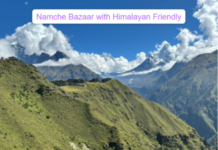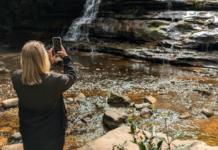Nepal is synonymous with iconic trekking adventures—Everest, Annapurna, and Langtang dominate the headlines. Yet, hidden far from the usual trails lies a mystical and rugged landscape—Dolpo Trekking in Nepal, a journey that immerses travelers in raw nature, ancient cultures, and Himalayan isolation. Whether you’re a seasoned trekker or an adventurous soul seeking an off-the-beaten-path experience, the Lower Dolpo Trek presents a unique blend of wilderness, Tibetan heritage, and spiritual mystique.
What is Dolpo Trekking in Nepal?
Dolpo, one of the most remote regions of Nepal, lies in the northwestern part of the country, bordering Tibet. It falls within Shey Phoksundo National Park—the largest in Nepal and home to the mesmerizing Phoksundo Lake. Trekking in Dolpo is not just about majestic mountains; it’s about the experience of a living Tibetan culture that has remained untouched for centuries.
Dolpo trekking can be categorized into Lower Dolpo Trek and Upper Dolpo Trek. While the upper region requires a more extensive permit process and higher budgets, Lower Dolpo Trek is comparatively more accessible and equally captivating.
Highlights of Lower Dolpo Trek
The Lower Dolpo Trek is a rewarding circuit that typically spans 17–21 days, depending on the itinerary. It offers a rich tapestry of:
- Shey Phoksundo Lake: Arguably one of the most beautiful and surreal lakes in Nepal, with turquoise waters set against arid cliffs.
- Buddhist and Bonpo Culture: Ancient monasteries and spiritual practices influenced by Tibetan Buddhism and Bon tradition.
- Wildlife and Nature: Rare sightings of blue sheep, Himalayan wolves, and the elusive snow leopard.
- High Mountain Passes: Cross adventurous passes like Numa La (5,190m) and Baga La (5,070m), offering jaw-dropping panoramic views.
- Villages Frozen in Time: Encounter authentic settlements like Ringmo, Tarakot, and Dho Tarap where life hasn’t changed much over centuries.
Lower Dolpo Trek Itinerary Overview
Here’s a brief look at a typical Lower Dolpo Trek itinerary:
| Day | Route |
| 1–2 | Fly to Nepalgunj, then to Juphal |
| 3–4 | Trek to Dunai, then to Tarakot |
| 5–6 | Ascend to Laini Odar and Nawarpani |
| 7–8 | Trek to Dho Tarap |
| 9–10 | Acclimatize in Dho Tarap, explore local culture |
| 11–13 | Cross Numa La and Baga La |
| 14–15 | Reach Shey Phoksundo Lake |
| 16–17 | Trek to Juphal and fly back to Nepalgunj/Kathmandu |
Note: The trek is moderately to strenuously difficult due to high altitude and rugged trails, suitable for those with prior trekking experience.
Best Time for Dolpo Trekking in Nepal
Unlike most Nepal trekking routes that shut down during monsoon (June–August), Dolpo lies in the rain shadow of the Dhaulagiri Range, making it ideal even in summer months. The best months include:
- May to October: Warm and dry weather with clearer trails.
- Autumn (Sept–Nov): Ideal for festivals, crystal-clear skies, and cultural interactions.
Winter (Dec–Feb) is harsh and not recommended due to heavy snow and extreme cold.
Permits and Regulations
Trekking in Dolpo is regulated and requires special permits:
- Lower Dolpo Permit: USD 20 per person/week
- Shey Phoksundo National Park Entry: NPR 3,000 (~USD 25)
- TIMS Card: Required through a registered trekking agency
Independent trekking is restricted; trekkers must travel with a licensed agency and at least one government-authorized guide.
Accommodation and Food
Lower Dolpo is sparsely populated and underdeveloped. Unlike the Annapurna or Everest region, there are no tea-house networks in many parts. Trekkers must opt for camping treks, complete with tents, cooks, and porters.
Meals typically include basic dal bhat (rice and lentils), Tibetan bread, noodles, potatoes, and yak cheese. Fresh produce is seasonal and limited, so trekkers should prepare for a simple diet.
Why Choose Lower Dolpo over Other Nepal Trekking Packages?
Many popular Nepal trekking packages offer incredible views and facilities—but also come with busy trails and over-commercialization. Lower Dolpo provides:
- Solitude: Far fewer trekkers, ensuring peace and pristine landscapes.
- Cultural Authenticity: Untouched Tibetan culture and traditional way of life.
- Adventure: Challenging terrain and untouched trails for experienced hikers.
If you’re seeking a deeper, more spiritual adventure through raw Himalayan terrain, Lower Dolpo delivers unmatched value.
How to Book Lower Dolpo Trek
Since solo trekking is not allowed, you’ll need to book through a registered Nepali trekking company. Most Nepal trekking packages offer Dolpo as a customizable adventure. These packages include:
- Domestic flights
- Permits and paperwork
- Experienced guide and porter
- Full-board meals on the trek
- Camping gear and kitchen staff
The average cost for Lower Dolpo Trekking ranges between USD 2,000–3,000 per person, depending on duration and inclusions.
Unique Cultural Encounters in Dolpo
Dolpo is famous for its ancient Bonpo monasteries, some over 1,000 years old. Festivals like Chaam Dance (mask dance) and Horse Racing festivals provide glimpses into sacred rituals and community traditions.
The region was immortalized in Eric Valli’s Oscar-nominated documentary “Himalaya”, which captures the spiritual and physical resilience of the Dolpo people.
Conclusion
Dolpo Trekking in Nepal is not just a trek—it’s a passage through a lost Himalayan world. The Lower Dolpo Trek offers a raw, culturally immersive, and deeply spiritual experience that few other trails can rival. From crossing high passes to gazing into the mystical Phoksundo Lake, every moment is carved into the mountains, myths, and memories.
If you’re searching for a Nepal trekking package that goes beyond the ordinary and leads to something profoundly extraordinary, Dolpo is your call to adventure.
Key Takeaways
- Dolpo Trekking in Nepal is a remote and culturally rich Himalayan experience.
- The Lower Dolpo Trek is moderately challenging, best suited for seasoned trekkers.
- Ideal for trekking even during monsoon due to its location in a rain shadow area.
- Requires special permits and organized trekking through a registered agency.
- Offers unmatched solitude, cultural depth, and natural beauty rarely seen on other Nepal trails.


















